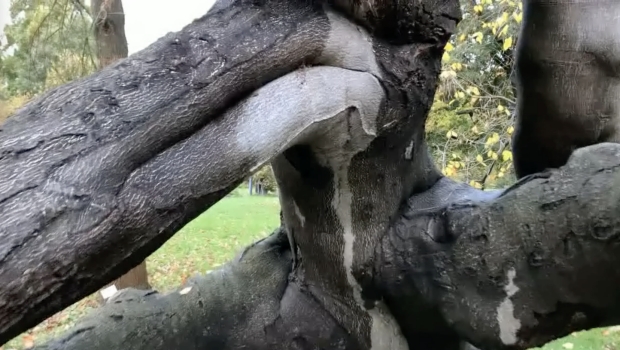Timbuktu was Mystic Stature!
For many Westerners, Timbuktu shrouds in mystery. It exists according to this vision more as a fantasy than a geographical location.
Some phrases like "from here to Timbuktu" create an image of a remote or a distant exotic place near the end of the world.
However, this picture changes in the minds of Muslims to make the city a legendary place for wisdom and the spiritual and intellectual center for propagation of Islam throughout Africa in the 14th and the 16th centuries.
The following lines are about this beautiful place and the environmental threats that are caused by the global climate change.
If you have more information about any city or any place in Mali, please use the form at the bottom of the page to write it. Thanks.

For Muslim poets, however, it is a mixture of the realm of Islam and the simplicity of the spiritual life of good ordinary Muslims. Fundamentalism is dead here.
In some points of view, the city is so legendary and it lives in the magic and in the reality.
Its muddy buildings are both areas of myth and wisdom. However, the city is in fact very much real.
It lies in the west African state of Mali on the border of the Sahara Desert. With its privileged location in the middle of the trans-Saharan trade routes for centuries, the city was both an economic and a cultural hub.
Tuareg nomads founded the city in the early year of 1100. They called their camps Tin Buktu, then the two words became Timbuktu after that.
The area became within two centuries the wealthiest metropolis and the nexus of the trans-Saharan trade.
At that beginning time of prosperity, Mali Empire was born with the ancient cities of Timbuktu and Djenné as centres of trade and Islamic studies.
The economy of the city had flourished from the salt from the deep Sahara, gold from Ghana and income from the slave markets, so the city became rich.
As center of Islamic learning, with impressive schools and libraries, Timbuktu attracted scholars from Mecca, Alexandria, Marrakech and Baghdad.
Besides, the arts flourished in the city and it gained its mystical presence throughout that world.
People of the city have built the three major mosques Djingareyber, Sankoré and Sidi Yahya during Timbuktu's golden age between the 14th and the 16th century.
However, the empire faced political challenges.
It captured the imagination of outsiders and attracted their attentions so they invaded the city continuously and plundered it many times.
The Moroccan army invaded Timbuktu in 1600 and then Timbuktu seized by Tuareg nomads. A terrible earthquake also happened in the city in addition to some epidemics and numerous famines.
At last, Timbuktu fell because of internal conspiracy and then the Songhai Empire emerged in the area.
The people of the Songhai Empire had been subjects to Mali Empire during its reign. The Songhai Empire itself, which existed from the early 15th to the late 16th century, had been the major power in West Africa.
After the fall of Mali Empire and in the present time, Mali is a landlocked state in Western Africa, neighbouring Algeria on the north, Cote d'Ivoire on the south, Niger on the east and Burkina Faso on the west.
It stretches over 1,240,000 square kilometres, which makes it the seventh largest country in Africa, with population estimated of about 13,000,000.
The majority of the population lives in the southern region, where the Niger and the Senegal rivers run, dependent on farming and fishing.
The three major mosques Djingareyber, Sankoré and Sidi Yahya are still standing today and the United Nations Educational, Scientific and Cultural Organization have inscribed all three of them in the UNESCO's world heritage list.
However, in spite of some restorations, the three monuments are under threat of desertification.
This fact encouraged the UNESCO to launch the initiative to assess the impact of global climate change on World Heritage sites at its session in Durban, South Africa in 2005. The list of those sites is here at the UNESCO World Heritage Sites.
Together, the three mosques once composed the famous University of Timbuktu, which changed the city into a center of wisdom and attracted scholars throughout the Muslim world.
In the mosques' open courtyards and in private residences, students learn the Koran and Quran logic, mathematics, astronomy and history.
In the town's prosperous past, books and manuscripts were valuable commodities, and private libraries flourished in the homes of local scholars.
The wisdom of Timbuktu is preserved and recorded in these manuscripts.
People of Timbuktu have saved and preserved those valuable manuscripts as family secrets for long time. Some scholars believe that there are still between 300,000 and 700,000 manuscripts in the region. Some of those manuscripts may have been lost, though.
Mosques are mostly built of mud and therefore, they are highly vulnerable to climate change.
Sand encroachment, believed to be a result of land cultivation and grazing, is a constant and increasing threat to the mosques.
Because of global warming, it is expected that the temperature in the region will rise and extreme precipitation events are projected to become more frequent and even stronger.
This combination of climate conditions will cause damage to the mosques and threatens to consign Timbuktu's magnificent past to the realms of mythology.
You can comment on this page about Timbuktu in Mali or write about any other beautiful sites located on this African country.
To do this, please use the following form and contribute to this page. Thanks.
Have A Great Story About Some Beautiful Sites in the World?
Do you have a great story about any beautiful site in the world? Share it!
Search inside Timbuktu or any other location in Mali.
You can also enjoy more activities here if you liked this page about Timbuktu in Mali. Please share it with your services through the buttons here, at the left column of the page and at the bottom of the page.
This could be also additional value to you, as you could experience some social networking technologies and know more. Click on "Enjoy this page? Please pay it forward" at the bottom to know how to link to the website.
I use "Solo Build It" tools at the bar below to empower this page about Timbuktu in Mali and the entire 100 Beautiful Sites in the World. Thanks to those strong website building and optimizing tools.
100 Beautiful Sites in the World| 100 Beautiful Sites Blog| Beautiful Site Map| Beautiful Scene Newsletter| Contact Beautiful Sites| Any Beautiful City| Forward 100 Beautiful Cities| 350| Amman| Archipelago Sea| Bayan Olgii| Big Sur| Boreal Forest| Borneo| Congo River Basin| Copenhagen| County Meath| Franz Josef Glacier| Gondar| Ilulissat| Indus River| Kordofan| Lake Chad| Mergui Archipelago| Monteverde Cloud Forest| Naukluft Park| Niger Delta| Norwegian Tundra| Okavango Delta| Olympia| Paris| Perth| Rotterdam| Rio de la Plata| Rub al-Khali| Tian Shan| Timbuktu| Tokyo| Tuvalu| Upper Po Valley| Valdes Peninsula| Yamal Peninsula| Yangtze River| User Interface

